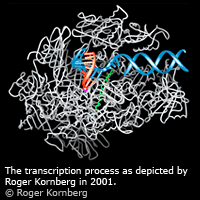 click the picture to play the spooky game!!!!!!
click the picture to play the spooky game!!!!!!
Tuesday, October 31, 2006
Do you believe in ghosts?
 Warning: this is very scary - make sure you are not alone and you have turned on your speakers - do not get too close to the computer screen - you must read all the stories carefully before you click to the next slide (Click here to proceed!!)
Warning: this is very scary - make sure you are not alone and you have turned on your speakers - do not get too close to the computer screen - you must read all the stories carefully before you click to the next slide (Click here to proceed!!)
Saturday, October 28, 2006
Female Scientists

Know any girls who might be wondering what it’s like to study physics at uni? They can find out (for free) by signing up to Planet Jemma. Watch daily video diaries about Jemma’s life and receive regular emails written especially for you. Be inspired by very cool women scientists!
Screaming Cups
 You've never heard a sound effect quite like this coming out of an ordinary cup!
You've never heard a sound effect quite like this coming out of an ordinary cup!You will need:
Fishing line or smooth string (it's worth trying a few different types to find what works best)
A plastic cup (yoghurt pots work too)
A damp cloth
Tape or modelling clay
What to do:
Cut a length of string about the height of the cup.
Stick the string to the centre of the inside of the cup with the tape or the clay.
Turn the cup upside-down. The string should hang down inside the cup.
Draw the damp cloth along the length of the string; this starts the string vibrating as the cloth slips and sticks - which is just how a violin bow works.
What in the name of tarnation is that hideous row? Is someone killing a chicken?
What’s going on?
Vibrating a piece of string in the same way with a damp cloth produces a sound, but it's very quiet. Adding the cup to the end of the string creates a larger surface to vibrate, amplifying the sound.
Want more?
You can do exactly the same as above, but on a bigger scale, with a bucket. Or better, use a variety of differently sized buckets, with bowls and cups and even bins. If you can get a really giant bin (half a metre in diameter) you get a really deep noise that sounds more like a cow than a chicken!
Look for this and many more cool experiments you can try at home in the Little Book of Experiments (click to open)
Friday, October 20, 2006
Today's lesson!
Just because half term has started does not mean we cannot teach you! Here is a series of excellent mini lessons (with some questions to see how well you have understood). This lesson supports the year 10 chemistry topic C2 Classifying the Elements, but no matter what year you are in you should learn something from it. Note: turn on your speakers & flash player required. Look out for more lessons in the future or email me with topics that you need help with and I will try my best to find some lessons for you!
Click on the image below to load the lesson.

Click on the image below to load the lesson.

Monday, October 16, 2006
Green pennies
 You will need:
You will need:A saucer
Some paper towels
Vinegar
3-5 pennies
What to do:
Arrange the paper towels into a wad on your saucer.
Pour enough vinegar into the saucer to cover the paper towel.
Place the pennies on top of the wet paper towel and leave for a few hours.
Encourage observations; look at both sides of the pennies. The tops of the pennies turn green and the bottoms of the pennies stay copper coloured.
What’s going on?
Vinegar is an acid that has the chemical name of 'acetic acid'. Part of this acid combines with the copper of the pennies to form a green coating that is composed of copper acetate. Oxygen must be present for this chemical reaction to occur. Oxygen comes from the air, and this is why the tops of the coins turn green but the bottoms do not.
Wednesday, October 11, 2006
You simply have to applaud creativity........
"A short video me and friend just finished for thefirstpost.co.uk . It took about 2 weeks to plan and animate and was made entirely with a digital stills camera."
Sunday, October 8, 2006
Thursday, October 5, 2006
Play with a DNA copying machine
 PCR is a method by which a few fragments of DNA can be duplicated into millions in a couple of hours. This makes PCR a very useful method in forensic science, as it means that very small amounts of DNA could be enough to identify a person. PCR was invented by Kary Mullis, one of two Nobel Laureates in Chemistry in 1993. If you play the game below, you will be able to learn more about PCR. Also, a must for HL Biology and Chemistry students is the 30 min lecture by Roger D. Kornberg, the winner of the 2006 Nobel Prize for Chemistry for his studies of the molecular basis of eukaryotic transcription.
PCR is a method by which a few fragments of DNA can be duplicated into millions in a couple of hours. This makes PCR a very useful method in forensic science, as it means that very small amounts of DNA could be enough to identify a person. PCR was invented by Kary Mullis, one of two Nobel Laureates in Chemistry in 1993. If you play the game below, you will be able to learn more about PCR. Also, a must for HL Biology and Chemistry students is the 30 min lecture by Roger D. Kornberg, the winner of the 2006 Nobel Prize for Chemistry for his studies of the molecular basis of eukaryotic transcription.Click here to play the DNA game
Click here for the lecture (real player required)
Click here for an interview with Roger D. Kornberg after he won the prize
Click here visit the Nobel Prize home page to see who won the other awards
CLick here to play some other games related to the Nobel Prizes
Wednesday, October 4, 2006
Spinning Juice
 Finished your drink of juice? Great! No don’t throw away the empty carton! Here’s something fascinating….
Finished your drink of juice? Great! No don’t throw away the empty carton! Here’s something fascinating….Adult supervision required.
You will need:
empty 1 litre fruit juice carton
piece of string
pair of scissors
washing up bowl
water
What to do:
Poke a hole in the bottom left hand corner of each of the four faces of a 1 litre juice carton. (children should be helped with this bit by adults)
Poke an extra hole in the top flap of the carton and tie a string through it.
Hang the carton from the string.
Pour some water into the washing up bowl so that it is about one quarter full.
Place the carton into the bowl of water.
Pour water into the carton until it is full to the top.
Now lift the carton out of the water by the string and watch what happens!
What’s going on?
Newton's Third Law states that every action has an equal and opposite reaction. Water shoots out the holes, and pushes back on the carton with equal force. A turbine is formed as the energy of the moving liquid is converted into rotational energy. Consequently the carton spins. This effect was first noted by Hero of Alexandria.
Hero (or Heron) of Alexandria (roughly A.D. 10 to roughly A.D. 70) was a Greek engineer and geometer. His most famous invention was the first documented steam engine, the aeolipile. Steam was generated in a separate boiler and fed into a sphere through a hollow spindle. The steam left the sphere via two narrow, angled nozzles and the reaction to the jets of steam leaving these nozzles made the sphere spin.
To see an animation of Hero’s Aeolipile click here.
Tuesday, October 3, 2006
Watch this amazing dragon follow your eyes
Results for the snack card challenge will be posted shortly. Meanwhile enjoy this strange dragon optical illusion. Whatever next? Flying pigs?
Subscribe to:
Posts (Atom)



